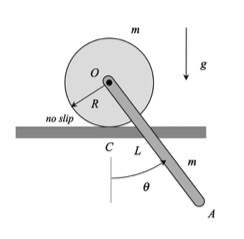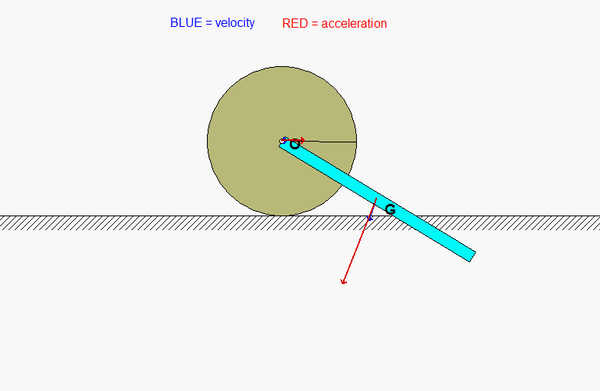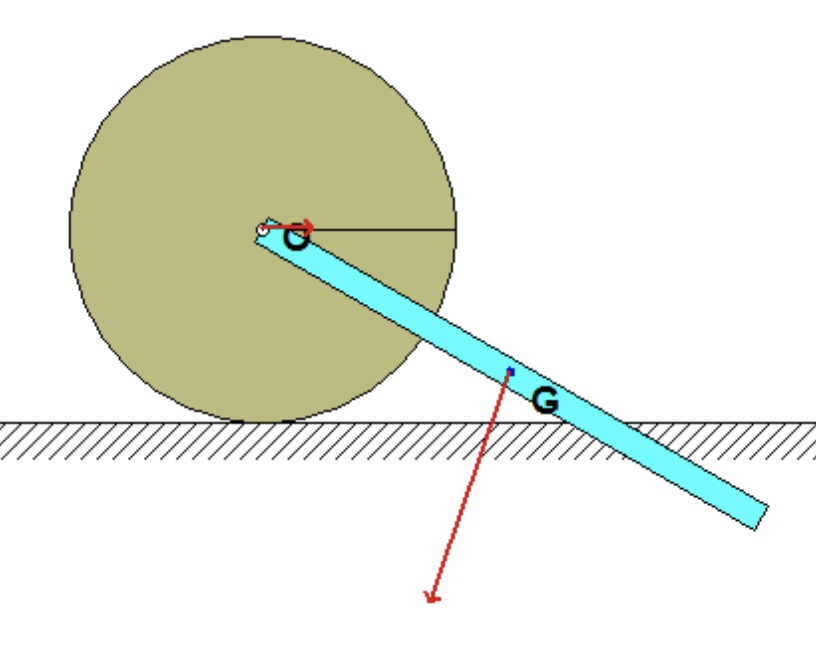
Any questions?? Please ask/answer questions regarding this homework problem through the "Leave a Comment" link above.
Discussion

The animation above shows the acceleration of the two centers of mass O and G for the disk and bar, respectively. As expected, the acceleration of O is always along a horizontal line. The direction of the acceleration of G is more complicated: its direction depends on the angle of the bar as well as on the angular velocity of the bar and the acceleration of point O. You will deal with this is STEP 3 below.
If we freeze-frame the animation at the time of release from rest, we see the directions of the acceleration of points O and G, as shown below.

HINT: As always, we should follow the four-step plan for solving this problem.
STEP 1: FBDs (draw INDIVIDUAL FBDs of the bar and disk)
STEP 2: Kinetics (here, Newton-Euler) Be careful on your choice of reference point in Euler's equation for the bar. For example, you cannot use point O as your reference point in using the short form of Euler's equation; that is, MO ≠ IO* αbar.
STEP 3: Kinematics. Here, you will need two acceleration kinematics equations. One that relates the acceleration of C to the acceleration of O, and a second that relates the accelerations of O and G (the cm of the bar). Be careful to give the angular accelerations of the disk and bar distinct names so as to not confuse them as you solve your equations. The angular acceleration of the bar is NOT equal to the angular acceleration of the disk. This is easily seen in the animation above.
STEP 4: Solve